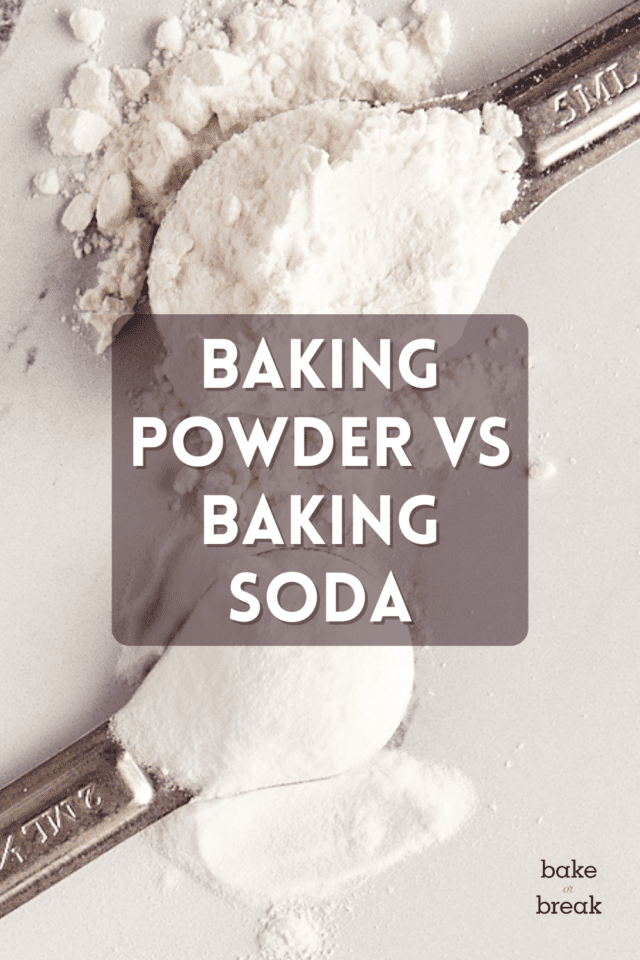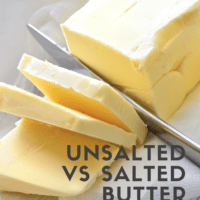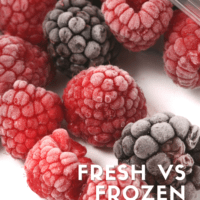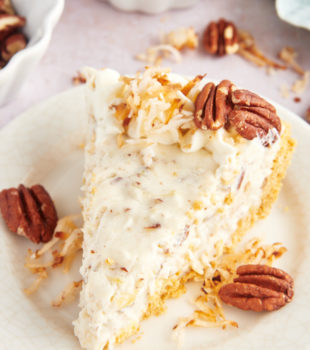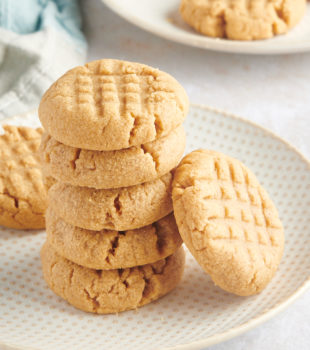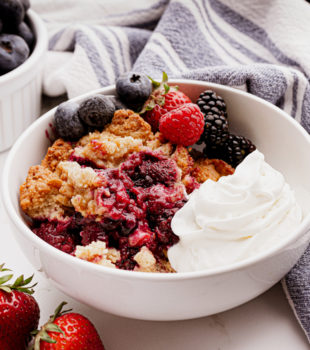Baking soda and baking powder are common baking ingredients with similar names and functions. Let’s compare baking powder vs baking soda, looking at the differences between these two ingredients and how they’re used in baking.
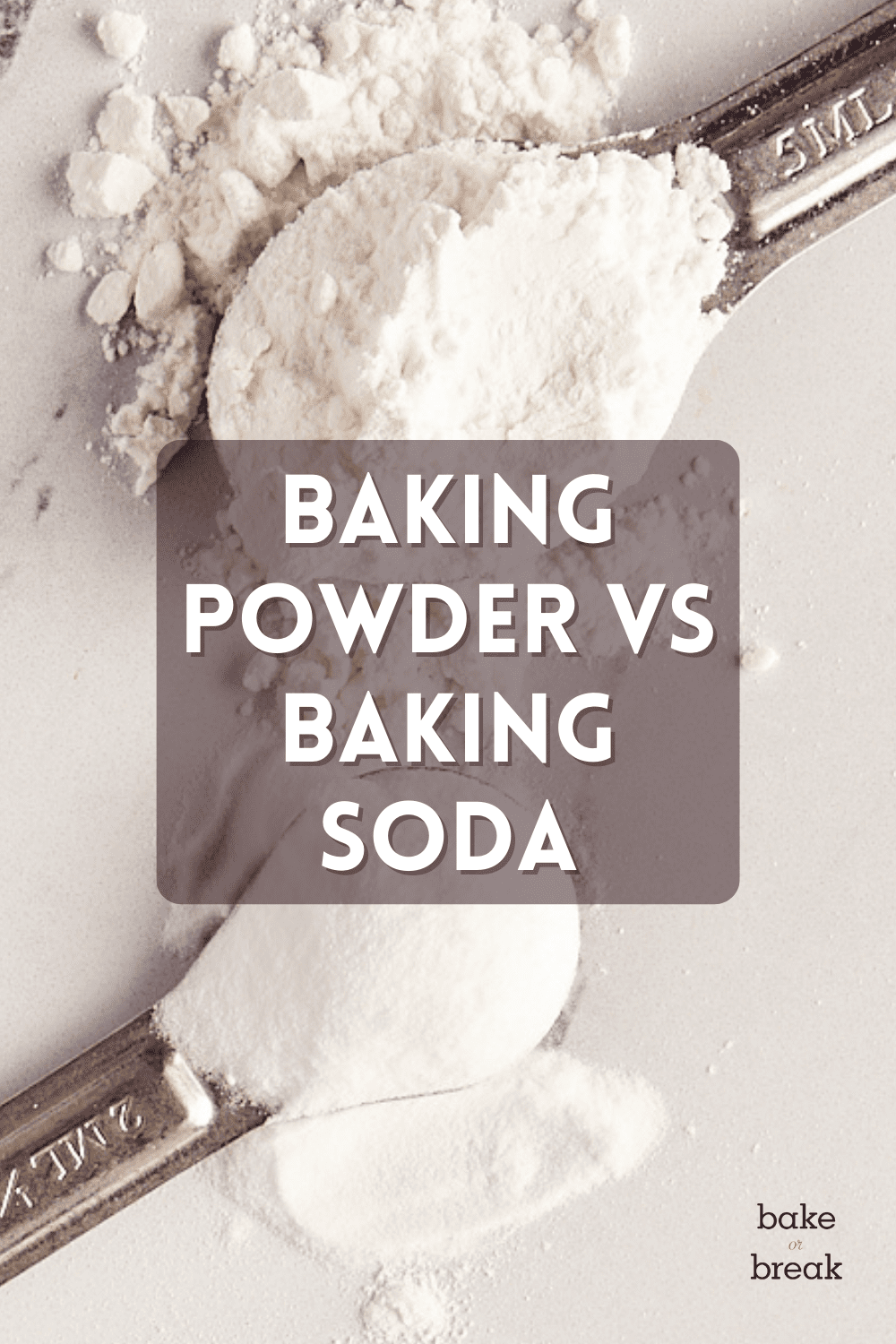
Table of contents
What is Leavening?
In the end, both baking powder and baking soda are used to produce leavening, so let’s start there. Put simply, leavening is the creation of bubbles in baked goods. Those bubbles cause batters and doughs to rise and give them a lighter texture.
There are a variety of leavening agents that work differently, and they have different effects on the results. For example, yeasts slowly consume sugars and release carbon dioxide resulting in breads with characteristic flavors and textures. There’s also mechanical leavening that results from a mixing process that creates lots of air bubbles.
Baking soda and baking powder are both chemical leavening agents, reacting with different ingredients and in different ways.
Are Baking Soda and Baking Powder the Same?
Definitely not. While baking soda and baking powder are chemical leaveners that are added to recipes to achieve similar results, they do their jobs in different ways. They each serve an important role in baking. Understanding how they work is important for knowing which one to use and how to use it effectively for optimal leavening in your baked goods.
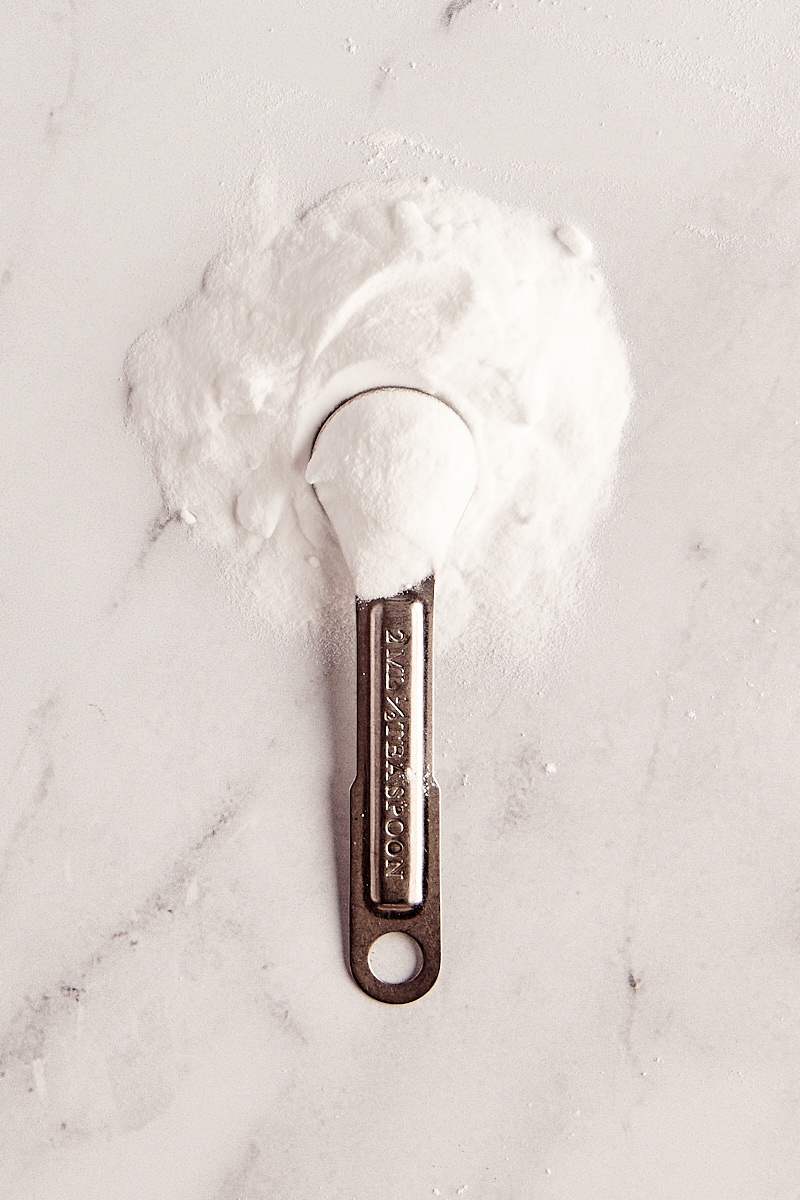
What is Baking Soda?
Baking soda is just one chemical, sodium bicarbonate. It’s sold as bicarbonate of soda in the UK and Australia, but they’re the same substance. It also has other names in other parts of the world. Whatever the name, it is a simple chemical that releases carbon dioxide when it reacts with an acid.
Baking soda is a single-acting leavening agent. This means that it is only triggered by one thing. Baking soda starts to produce gas bubbles as soon as it comes into contact with an acidic ingredient.
Common acidic ingredients you’ll find in recipes using baking soda are:
- lemon juice
- yogurt
- buttermilk
- cocoa powder
- sour cream
- molasses
- brown sugar
- vinegar
- honey
- cream of tartar
Most recipes call for only a small amount of baking soda. You want to use just enough to get the chemical reaction with the acid in the recipe. Using too much means all of the baking soda won’t react and your baked goods may have a metallic taste, especially if your baking soda isn’t fresh.
Baking soda can also react without the presence of acid. You probably have mixed very hot water with baking soda at some point, so you know how it will bubble. At temperatures used for most baking recipes, the heat alone is enough to cause at least some degree of reaction. But you’re more likely to get that metallic taste if there’s no acidic component for it to neutralize.
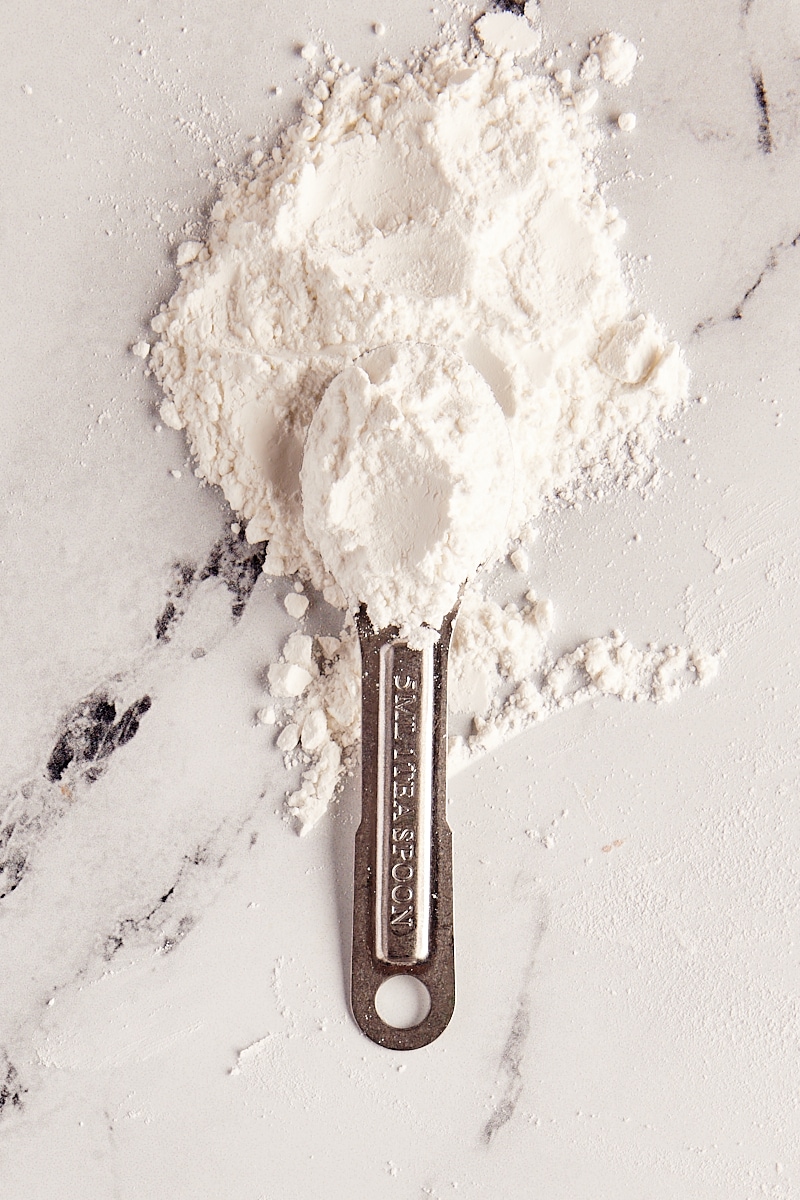
What is Baking Powder?
Baking powder is a leavening agent similar to baking soda, but it behaves differently. It’s made of sodium bicarbonate (which is baking soda) plus some dry acid. That means that acidic ingredients aren’t required in your recipe to activate baking powder because it contains one or two acids already. Exposing the baking powder to liquid is enough to start the leavening process.
The number and kinds of acids present are the difference between the two types of baking powder: single acting and double acting.
Single Acting Baking Powder
Single acting baking powder is activated by moisture without the need for an additional acidic ingredient. When the batter or dough is mixed with liquid, the baking powder reacts by producing carbon dioxide gas, which causes the batter or dough to rise.
Most single acting baking powders are designed to be used immediately after being mixed. They start to create leavening bubbles immediately after mixing and when the reaction ends, no new bubbles will be formed. It’s important to mix your batter and get it into the oven while the bubbles are still forming to get the best rise.
Double Acting Baking Powder
Double acting baking powder is a leavening agent that contains two acidic compounds. The first acid reacts with the wet ingredients like a single acting baking powder. The second acid reacts with the heat of the oven.
Because of the delayed leavening effect, there’s less urgency to get the batter or dough into the oven. The full leavening effect won’t start until it goes in the oven. However, it’s still advisable to bake promptly after mixing for most baking recipes as the first chemical reaction already began when mixing.
This double action results in a more consistent rise in baked goods, especially in baked goods that are baked in batches. Because double acting baking powder is more reliable than single acting baking powder, it is the preferred choice for many bakers.
What Type of Baking Powder Should I Use?
For most recipes, I recommend a quality double acting baking powder because it provides better consistency and reliability. It’s also the type of baking powder you’re most likely to find at your grocery store. For best results, be sure to follow the recipe if it calls for a specific type.
Why Do Some Recipes Have Both Baking Powder and Baking Soda?
Despite all this discussion of when to use these ingredients in relation to the presence or absence of acidic ingredients, using both baking powder and baking soda together is quite common for many reasons.
The amount of baking soda you’re using is relative to the amount of the acidic ingredient, and sometimes the degree of leavening the baking soda provides just isn’t enough. And adding more baking soda isn’t always the answer, as it will affect flavor.
In recipes where you want a bit of an acidic or tangy flavor, using enough baking soda to neutralize that acidic component completely will possibly negate its flavor as well. You want that lemon, cocoa, or other acidic flavor to come through in the end. Adding baking powder to do some of the leavening work means you can use less baking soda in order to preserve that flavor.
Another reason you’ll see both used is that they each affect browning differently. Browning occurs more easily in alkaline batters and doughs, so adding some baking soda along with baking powder can help get to a pH where your baked goods will brown beautifully.
Baking soda also helps to weaken gluten, allowing things like cookies to spread while maintaining an optimal texture.
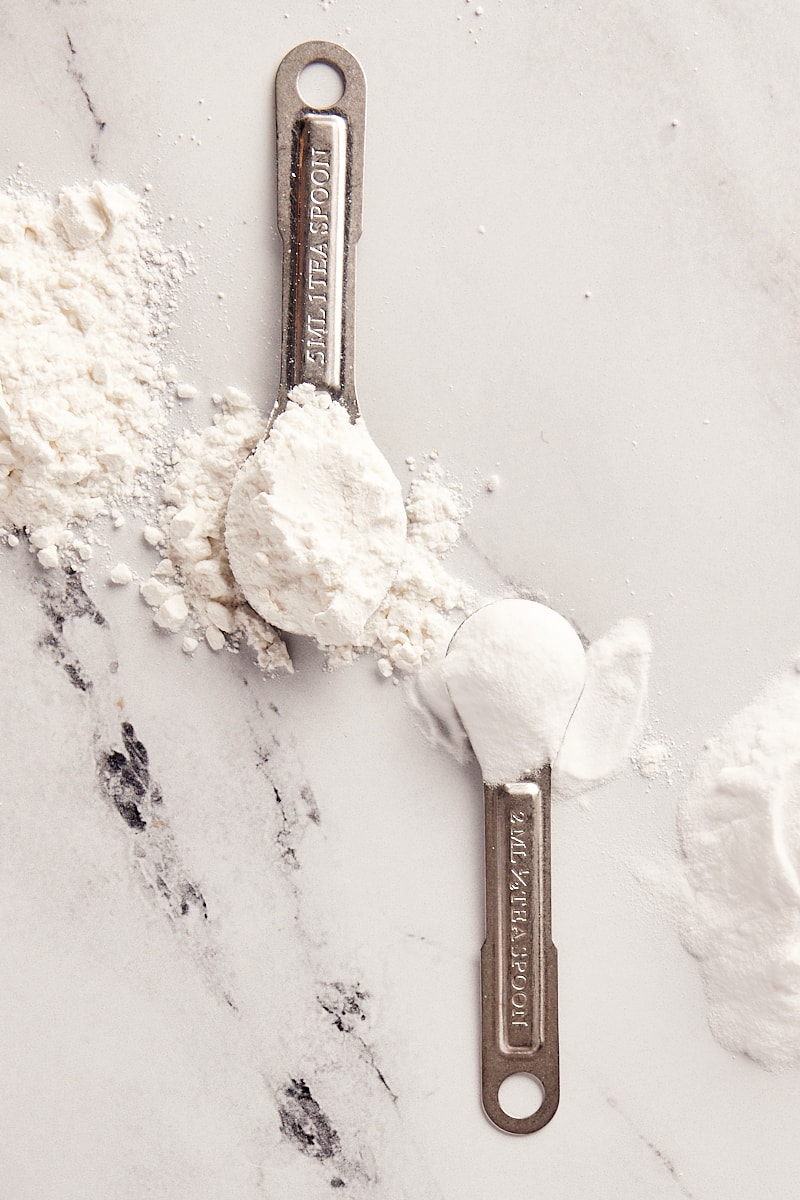
Can I Substitute Baking Powder for Baking Soda?
Some of the confusion that surrounds this question comes from the inclusion of baking soda in baking powder. The key is that baking powder already contains an acidic ingredient ready to activate the baking soda, while baking soda needs an acidic ingredient added to the batter or dough.
If you use baking soda in a recipe that calls for baking powder but doesn’t contain an acidic ingredient, you won’t get those bubbles and the resulting leavening.
Also, keep in mind that baking soda is quite a bit stronger than baking powder. We’re talking three to four times stronger. Because of that and the fact that they react differently, that substitution is a tricky one without altering a significant part of the recipe. For best results, use what is listed in the recipe.
However, if you find yourself without baking soda, you can try using baking powder in a pinch. Try using 1 teaspoon of baking powder for every 1/4 teaspoon of baking soda in the recipe. The end result won’t be quite the same, possibly altering the flavor, texture, and/or rise to at least some degree.
Can I Substitute Baking Soda for Baking Powder?
For all the reasons that answer the previous question, making this substitution isn’t optimal. As always, it’s best to use the ingredients listed in the recipe.
If you do need to make this substitution, you can combine baking soda and cream of tartar to make a baking soda substitute. Use 2 parts cream of tartar and 1 part baking soda. That means if you need a tablespoon of baking powder, combine 2 teaspoons of cream of tartar with 1 teaspoon of baking soda. Keep in mind that this makes a single-acting baking powder, so your batter or dough will need to go into the oven as soon as possible.
Substituting without adding cream of tartar can work, although I generally don’t recommend it because of the potential changes in texture and flavor. But desperate times sometimes call for drastic measures. Try using baking soda in about 1/4 the amount of baking powder in the recipe. To improve the chances of success, you may also want to add about 1/2 teaspoon of an acidic ingredient (like lemon juice or vinegar) for every 1/4 teaspoon of baking soda.
Frequently Asked Questions
Both of these ingredients are used to help baked goods rise by creating carbon dioxide, but they do that in different ways. Generally speaking, baking soda needs an acidic ingredient (like lemon juice or buttermilk) to work, while baking powder contains an acidic ingredient to trigger that reaction.
Both baking soda and baking powder have finite shelf lives and lose their effectiveness over time. They can even go bad well before their expiration date, especially if exposed to warm, humid conditions. Fortunately, it’s quick and easy to test these before you bake. I always test new containers right after I open them and periodically after opening them. Learn more: How to Test Baking Powder and Baking Soda for Freshness
If your leavener works fine when testing it, then it may be a problem with an ingredient in the recipe. Check to make sure that your ingredients are still in date. Also verify the amounts used, especially if you don’t use a digital scale to measure by weight.
After baking soda is activated, generally by mixing dry and wet ingredients, the magic and a timer start. Once all of the baking soda has reacted with acid, it can no longer create those first bubbles from mixing.
If you leave a mixed batter on the counter long enough, some of those initial bubbles will burst, deflating your batter. If you stir that batter at that point, you’ll lose a lot more of the leavening effect.
Generally speaking, the amount of acid necessary to activate baking soda is relatively small and shouldn’t affect the flavor of most baked goods. Lemon is a potent flavor, though, and some people are just more sensitive to it.

